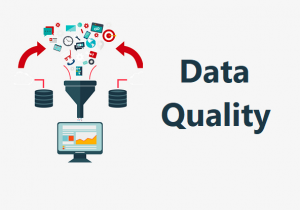
In this post, you will learn about some of the key data quality challenges which you may need to tackle with, if you are working on data analytics projects or planning to get started on data analytics initiatives. If you represent key stakeholders in analytics team, you may find this post to be useful in understanding the data quality challenges.
Here are the key challenges in relation to data quality which when taken care would result in great outcomes from analytics projects related to descriptive, predictive and prescriptive analytics:
- Data accuracy / validation
- Data consistency
- Data availability
- Data discovery
- Data usability
- Data SLA
- Cos-effective data
Data Accuracy
One of the most important challenges in relation to data quality is data accuracy. Data accuracy is about data correctness and data completeness. One would require to have processes and tools / frameworks in place to perform data validation at regular intervals to ensure data accuracy.
It would be required to come up with one or more workflows to assess / validate the data pipelines used to acquire dataset. In addition, the workflow will also be used to run data validation rules to check data correctness & completeness. Tools such as Apache Airflow will prove to be helpful in designing / developing such workflows.
Data Consistency
One of the key challenge for analytics initiative is to make sure different teams including stakeholders use the data derived from single source of truth. Failing to do so results in conflicting reports leading to erroneous and delayed actions.
As data is owned by different product teams, one of the way to achieve data consistency is to get data retrieved from different product databases and have the data written to preferably a data warehouse. The owner of this data warehouse can be the data engineering team. Teams can retrieve data from this data warehouse and create consistent reports.
Data Availability
Data availability is one of the other important data quality challenges which can become hinderance for analytics projects. Data availability is related to the following aspects:
- Many a times, one starts analytics projects from the data available in the data storage. Rather than this, one should follow the approach of hypothesis or question first and data second approach. What it means is that one should first start by asking analytic question or setting up hypothesis and then look for the data – whether all the data required for analytical solution is available internally or not. In case the data is not available internally, one may look for external data sources including data owned by other product teams or data owned by external vendors.
- Other aspect of data availability is availability of data storage at all times.
The solutions to data availability are some of the following:
- Start with question-first-data-second approach. This will make sure we have all the data which is needed to create a high quality analytical solution.
- Create a highly redundant data storage solution to ensure the data is available at all times.
- Create a highly redundant data pipeline to ensure that data is moved from product databases or external data sources to data warehouse at all times without fail.
Data Discovery
Ability to discover the appropriate data set in faster manner can result in creation of appropriate analytical solutions which can help business extract actionable insights in timely manner. This could, in turn, lead to business gains including competitive advantage.
Data cataloging is one of the key solution for data discovery. There are different tools & frameworks on-premise and cloud-based which could help in discovering data in faster manner. One could achieve following as a result of data cataloging solution:
- Ease access to most appropriate data set
- Tag sensitive data for ease of use
- Faceted search for getting access to data in simple manner
- Provides foundation for data governance
Data Usability
Easy to understand and operate on the data set enables stakeholders having varied technical knowledge to work with data and create quality analytical solution in easy and faster manner.
Cost-effective Data
Ability to gather and process large volume of data using cost-effective compute and storage could result in high quality and timely analytical solutions. Many a time, data quality is impacted due to limitation posed by costly solutions related to storing and processing large volume of data.
There are cost-effective cloud services (such as usage of transient big data solutions) which could be used to create cost-effective data pipeline solutions. Also, cloud storage solutions (such as Amazon S3 storage) are also very cheap.
- Large Language Models (LLMs): Four Critical Modeling Stages - August 4, 2025
- Agentic Workflow Design Patterns Explained with Examples - August 3, 2025
- What is Data Strategy? - August 2, 2025
I found it very helpful. However the differences are not too understandable for me